Supermicro SYS-221H-TNR Power Consumption
Power consumption was relatively good thanks to the 1.2kW 80Plus Titanium power supplies. These are a step up in efficiency from the 80Plus Platinum units we see in many other servers.
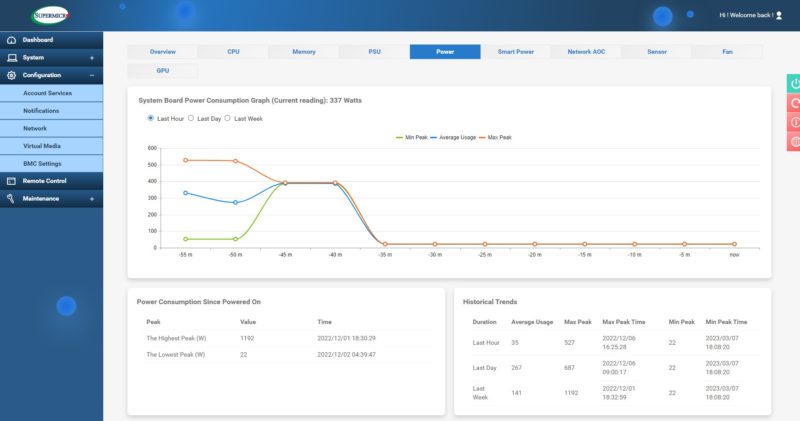
We took the above screenshot in this server where it apparently hit just shy of that 1.2kW figure before it got to us. We saw much lower power consumption. Generally, we saw around a 200W idle with peaks in excess of 950W. If you are using higher-end 350W TDP CPUs, we strongly suggest getting the 1.2kW PSUs, not the 800W units. For lower core count and TDP SKUs, the 800W may be more efficient.
STH Server Spider: Supermicro SYS-221H-TNR
In the second half of 2018, we introduced the STH Server Spider as a quick reference to where a server system’s aptitude lies. Our goal is to start giving a quick visual depiction of the types of parameters that a server is targeted at.
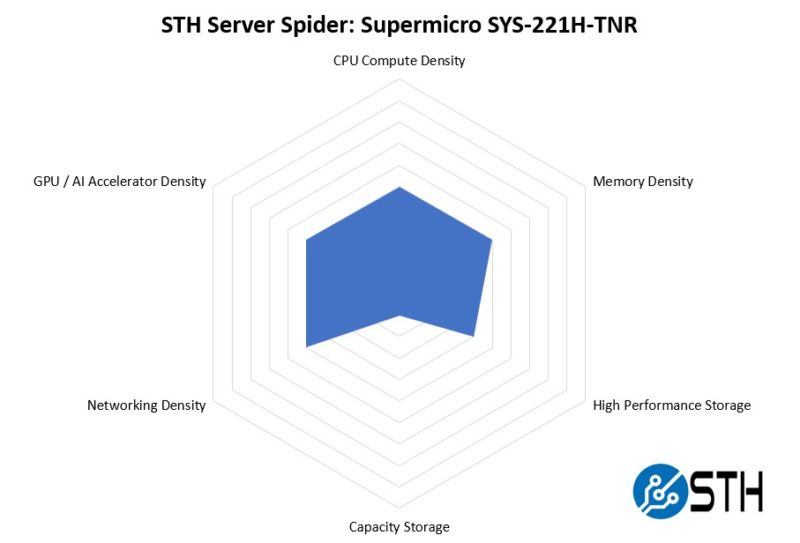
This is designed to be a general-purpose server, so it is not extreme on any one axis. Part of that is due to the fact that Supermicro has a wide variety of its new 4th Gen Intel Xeon Scalable “Sapphire Rapids” servers as part of the X13 generation. Here is Supermicro’s overview video launching the new line talking about this, and other servers.
As a teaser, there is someone familiar featured in that video.
Final Words
At STH, we have been reviewing Supermicro servers for over a decade. The new X13 Hyper line is really something different. Part of that is driven by new features like the new Intel Xeon processors, DDR5, PCIe Gen5, and more.
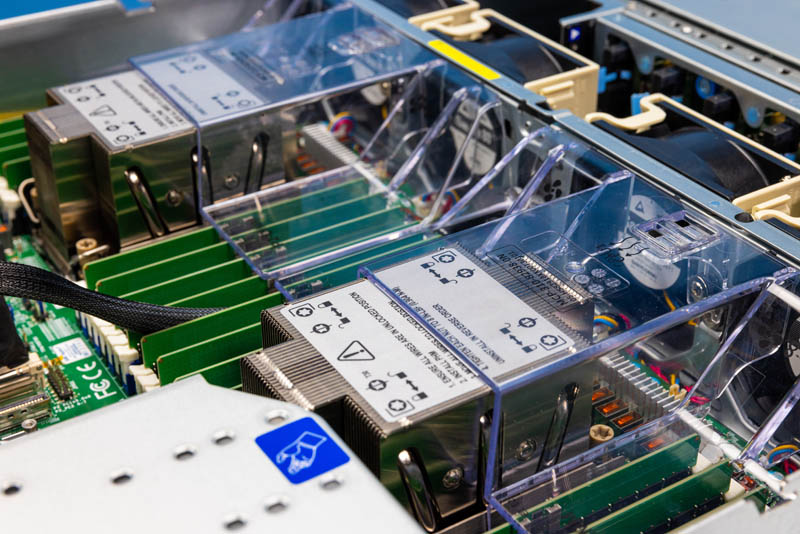
We have seen Supermicro’s generational shifts many times before. X13 Hyper is different. This is a new level of detail on items like making serviceable PCIe risers. The fact that one can open the server, install a PCIe card, and have it closed back up in under 30 seconds now even working at a leisurely pace is a direct result of that attention to detail. Things like small tabs may seem trivial until one has seen generations of servers and what impacts these small changes make.
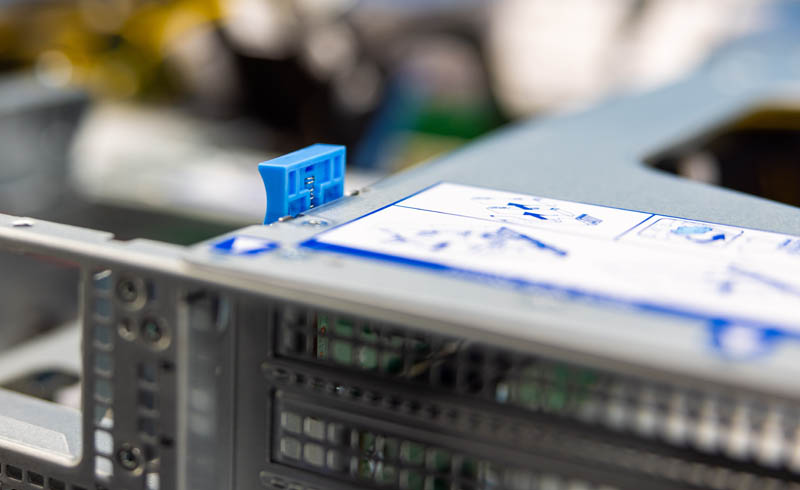
Still, the biggest changes are going to be what this new generation enables. More cores, faster storage, networking, and AI accelerators make the new generation of servers much faster than previous generations.
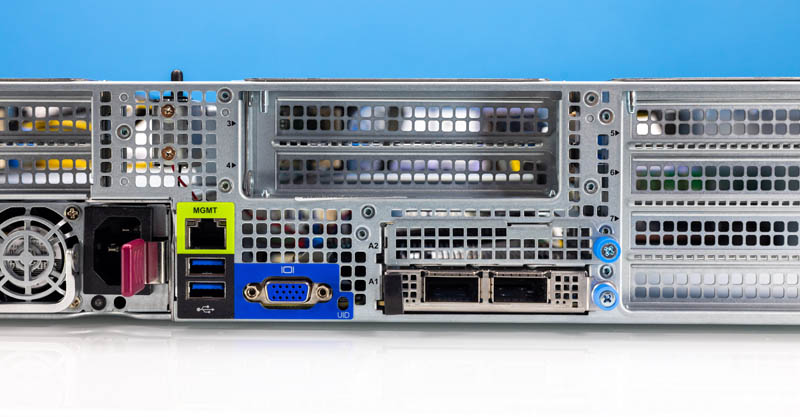
Overall, the Supermicro SYS-221H-TNR feels like a X12 Ultra server that has been refined to be more user-friendly and greatly expanded in terms of the performance and capability range it offers. That may seem obvious given the new Xeon platform, but the one aspect that has stuck with us after a few months of testing is how the quality bar has been raised with Supermicro’s X13 Hyper 2U sever.




That looks beautiful. I’m just worried that Supermicro’s trying to be HPE instead of continuing to be the classic SMC
I’m curious if the chassis can fit consumer GPUs like the 4090 or 4080. RTX 6000 Ada/L40 pricing has forced a second look at consumer GPUs for ML workloads and figuring out which — if any — Supermicro systems can physically accommodate them has not been easy.
@ssnseawolf I’ve been building these up for Intel for the past year. They will accept the Arctic Sound/Flex GPU but that’s it.
STH level of detail: Let’s show everyone the new pop up pull tab
“DDR?-4800 memory modules” ??
I wonder if the SSDs get any cooling at all. With there being low-drag open grilles on both sides of the faceplace there is no reason for the air to be sucked through the high-drag SSD cage.
So bad they’re heading where HP already is – one-time use proprietary-everything server, going to trash after 5 years. Most of SM fans loved them for being conservative and standardized. Those plastic pins in toolless trays and tabs are weak and cracks in no time. X10-X11 and maybe H11-H12 probably were the last customisable server systems.
Another great article. And just jealous of all the amazing toys you get to review/play with 🙂 Small textual correction, page 2 : “Instead of slots for PCIe risers, instead the PCIe risers are cabled as are the front drive bays.” I might be tired but somehow my brain can’t read this correctly.